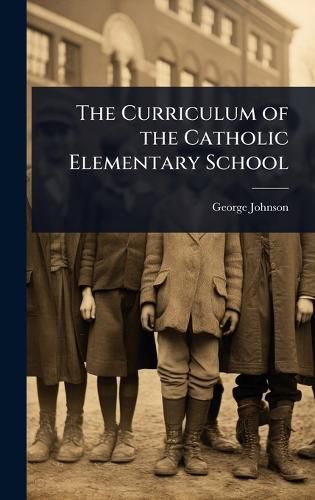Readings Newsletter
Become a Readings Member to make your shopping experience even easier.
Sign in or sign up for free!
You’re not far away from qualifying for FREE standard shipping within Australia
You’ve qualified for FREE standard shipping within Australia
The cart is loading…






"The Curriculum of the Catholic Elementary School: A Discussion of Its Psychological and Social Foundations" by George Johnson offers a detailed examination of the principles underpinning Catholic elementary education in the early 20th century. Johnson delves into the psychological and social factors that shape effective curriculum design, providing insights into how educators can best meet the needs of their students within a faith-based context.
This work is valuable for those interested in the history of Catholic education, the development of educational theory, and the integration of faith and learning. It provides a window into the past and illuminates enduring questions about the purpose and practice of education. Johnson's thoughtful analysis remains relevant for educators seeking to create a nurturing and intellectually stimulating environment for young learners.
This work has been selected by scholars as being culturally important, and is part of the knowledge base of civilization as we know it. This work was reproduced from the original artifact, and remains as true to the original work as possible. Therefore, you will see the original copyright references, library stamps (as most of these works have been housed in our most important libraries around the world), and other notations in the work.
This work is in the public domain in the United States of America, and possibly other nations. Within the United States, you may freely copy and distribute this work, as no entity (individual or corporate) has a copyright on the body of the work.
As a reproduction of a historical artifact, this work may contain missing or blurred pages, poor pictures, errant marks, etc. Scholars believe, and we concur, that this work is important enough to be preserved, reproduced, and made generally available to the public. We appreciate your support of the preservation process, and thank you for being an important part of keeping this knowledge alive and relevant.
$9.00 standard shipping within Australia
FREE standard shipping within Australia for orders over $100.00
Express & International shipping calculated at checkout
"The Curriculum of the Catholic Elementary School: A Discussion of Its Psychological and Social Foundations" by George Johnson offers a detailed examination of the principles underpinning Catholic elementary education in the early 20th century. Johnson delves into the psychological and social factors that shape effective curriculum design, providing insights into how educators can best meet the needs of their students within a faith-based context.
This work is valuable for those interested in the history of Catholic education, the development of educational theory, and the integration of faith and learning. It provides a window into the past and illuminates enduring questions about the purpose and practice of education. Johnson's thoughtful analysis remains relevant for educators seeking to create a nurturing and intellectually stimulating environment for young learners.
This work has been selected by scholars as being culturally important, and is part of the knowledge base of civilization as we know it. This work was reproduced from the original artifact, and remains as true to the original work as possible. Therefore, you will see the original copyright references, library stamps (as most of these works have been housed in our most important libraries around the world), and other notations in the work.
This work is in the public domain in the United States of America, and possibly other nations. Within the United States, you may freely copy and distribute this work, as no entity (individual or corporate) has a copyright on the body of the work.
As a reproduction of a historical artifact, this work may contain missing or blurred pages, poor pictures, errant marks, etc. Scholars believe, and we concur, that this work is important enough to be preserved, reproduced, and made generally available to the public. We appreciate your support of the preservation process, and thank you for being an important part of keeping this knowledge alive and relevant.